Cola-Cola has always been, and always will be, my soft drink of choice. As far back as I can remember, I've been captivated by the incredibly renowned Coca-Cola label. I love everything from its design to its astounding global visibility.
Throughout the years, Coca-Cola has come up with countless brilliant advertisements that showcase the drink's ability to bring people together and to give them a sense of harmony.
However, this would not be possible without the Coke bottle, the one thing that has propelled the brand to international fame throughout the past century.
But how many people can actually say they're familiar with the history of the iconic bottle and, respectively, its brand?
The evolution of the Coke bottle is simply amazing; it has taken many forms and been colored many shades, and continues to be perhaps the most well-known commercial product man has created.
Below, we identify some of the most significant moments in the Coke bottle's life, and show you how it became what it is today.
What did you think of the amazing history of the famous bottle? Let us know in the comments, and please SHARE!
1899
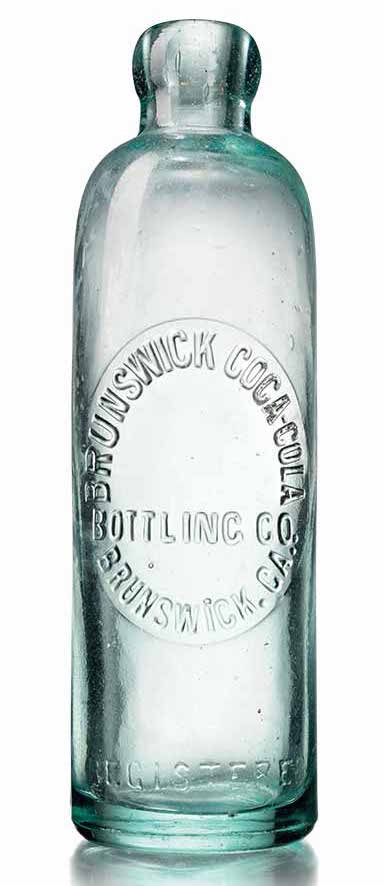
The foundations of the Coca-Cola Company is set up by Asa Griggs Candler (December 30, 1851 — March 12, 1929), an American business tycoon and the 44th Mayor of Atlanta, GA. A decade ago, he bought the formula for Coca-Cola from John Pemberton, the inventor.
With strong marketing strategies, Candler launched the Coca-Cola brand from mere obscurity to nationwide fame within five years. The first Coca-Cola bottle, pictured here, was made under contract in Chattanooga, Tennessee. For the next five years, these straight-sided Hutchinson bottles would be used.
1906
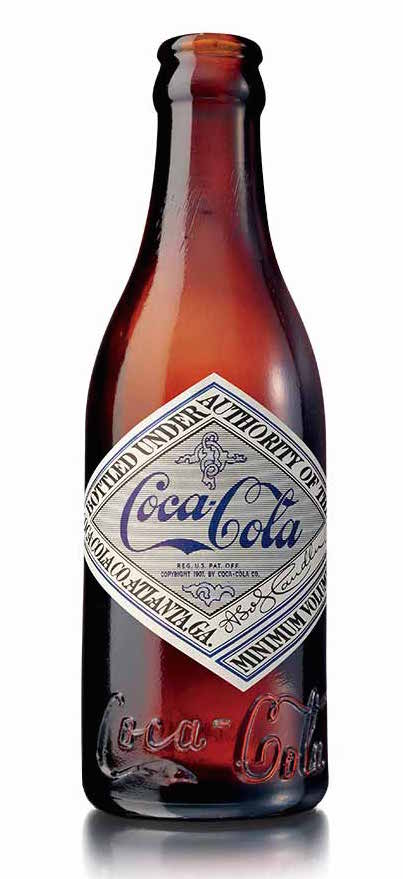
Now sold in every state, Coca-Cola needed to be wary of competitors and infringers. In 1906, the company came out with a new diamond-shaped label, allowing for easier brand recognition. The new straight-sided bottles were amber-colored. There were, however, some big infringers — among them was the notorious Koca-Nola.
1915
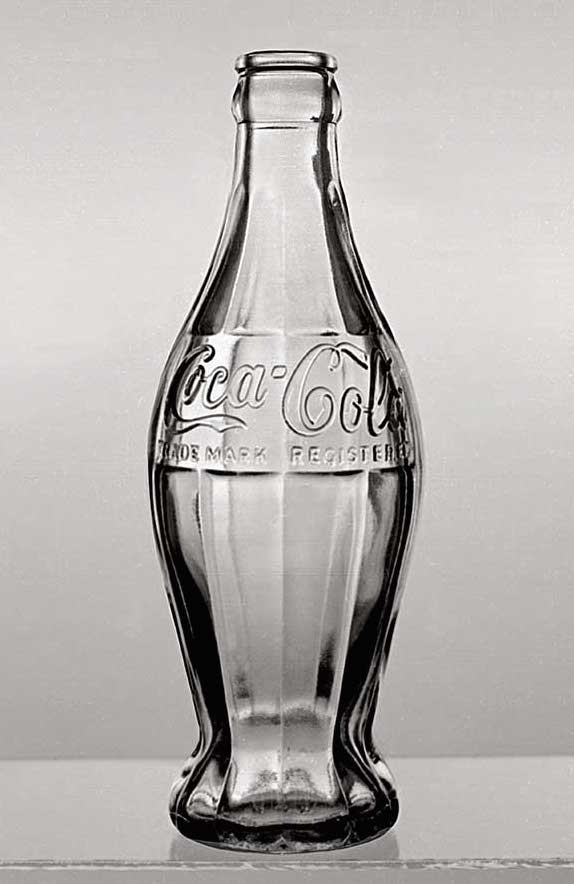
The need for creating a distinctive, distinguished form of packaging increased significantly after 1910. That was the only way the company could sufficiently protect itself from copycats. In 1915, the Root Glass Company in Terre Haute, Indiana, patented the famous contour bottle, the well-known stencil of all other future coke bottles. The challenge for the design was to come up with a “bottle so distinct that you would recognize it by feel in the dark or lying broken on the ground.”
1923
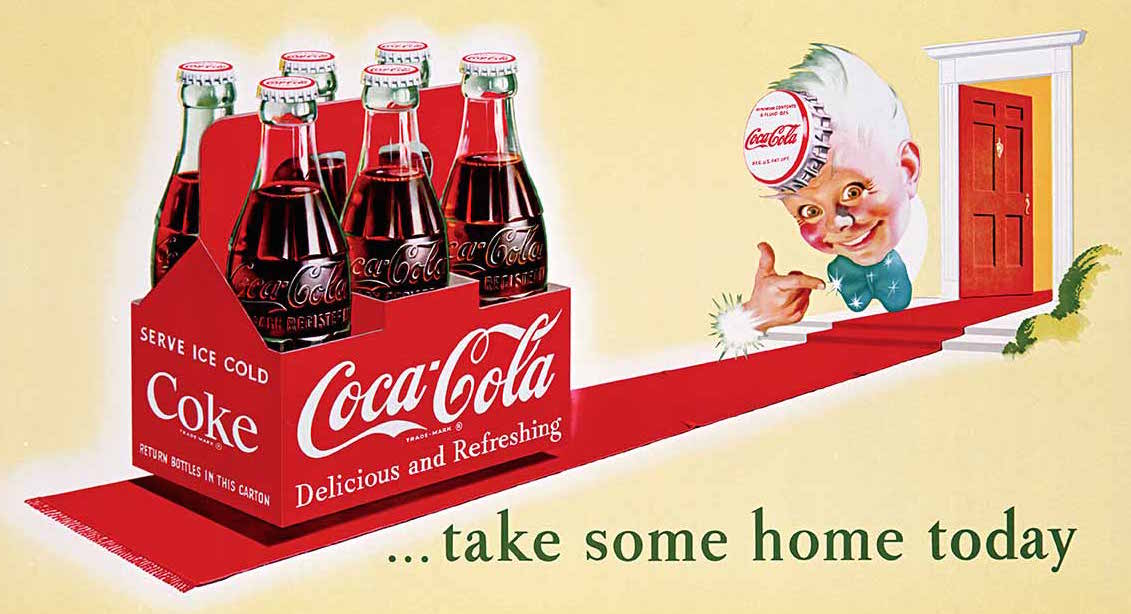
By now, standard refrigeration systems have become more widespread in homes throughout the country. As a response, the company developed a handy six-pack carrier to encourage customers to enjoy the drink at home. This was also the year that the patent for the bottle was renewed. The day that the patent was reissued fell on Christmas, and thus, the Coke bottle was nicknamed the “Christmas Bottle” for a brief period.
1941
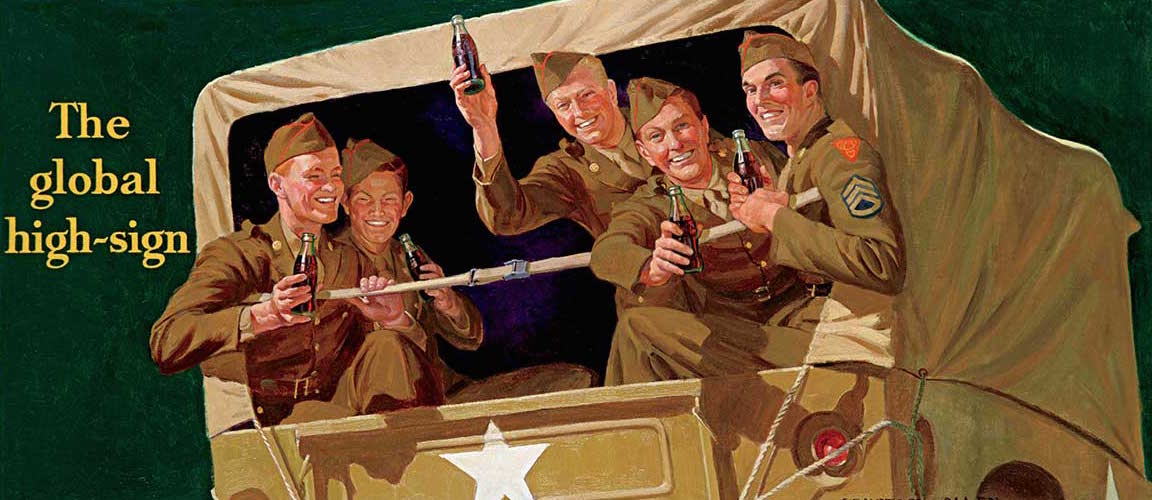
Very famously, the company made efforts to widely distribute its product during World War II. President Robert Woodruff, who headed the company from 1923 to 1954, famously gave the order that “every man in uniform gets a bottle of Coca-Cola for five cents, wherever he is, and whatever it costs the company.”
This strategy helped further project the brand onto a global platform. From the end of the war until 1960, the number of countries that had bottling operations practically doubled.
1950

In 1949, a study showed that less than one percent of Americans couldn’t accurately identify the Coca-Cola bottle by shape alone. To remedy this, the company sought a trademark status for its already-iconic contour bottle. It was unusual for a commercial project to be granted such a status, but on April 12, 1961, the distinctive bottle started being recognized as a trademark. In 1950, Coca-Cola becomes the first commercial entity to grace the cover of Time magazine.
1955
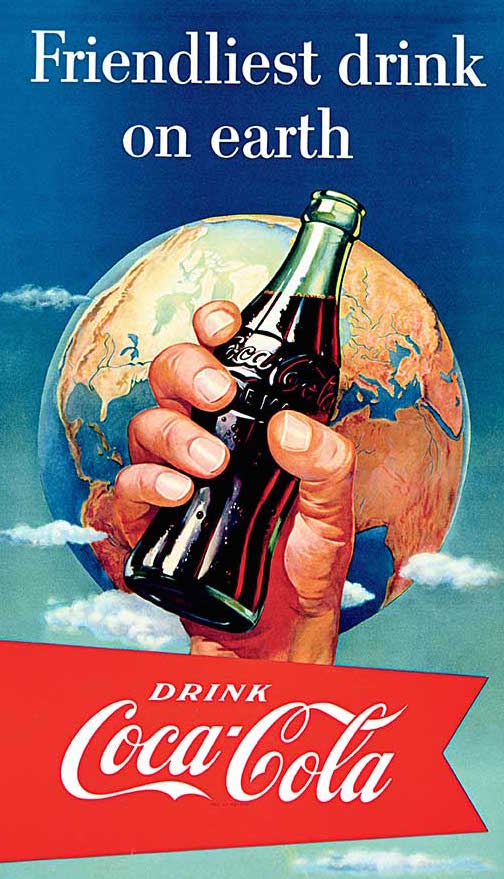
This was a pivotal year for the company’s product packaging. It now made 10-, 12-, and 26-oz bottles (at this point, they were available only in the U.S.), in addition to the standard 6.5-oz bottle. The change allowed for greater flexibility and options for consumers.
1957
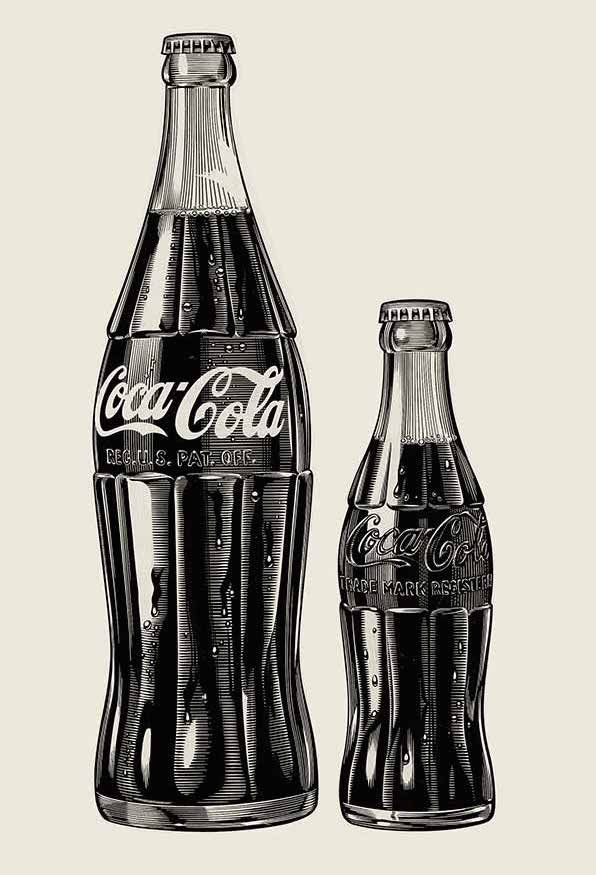
Within two years, the Coca-Cola contour bottles debuted printed white labeling. Prior to this, the “Coca-Cola” trademark on the bottle had always been blown in glass lettering.
1960
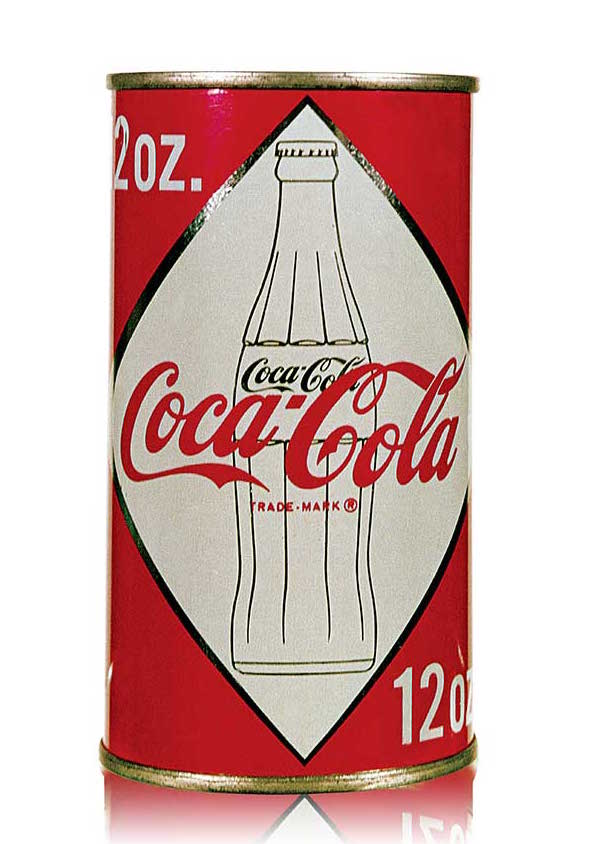
Just a year before the Coca-Cola bottle received its official trademark status, and two years before artist Andy Warhol introduced the bottle to the pop art movement, 12oz aluminum Coke cans were introduced in the U.S. Just like Warhol would show in his art, the brand had, by this point, become fully incorporate in — and symbolic of — American mass culture.
1993
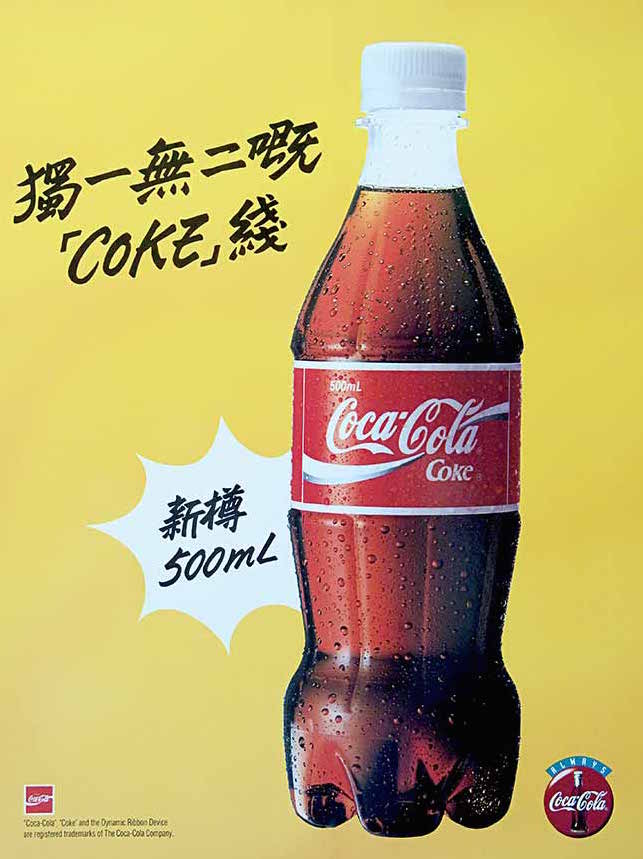
Coca-Cola starts to manufacture their bottles with polyethylene terephthalate, or PET, a material that can be recycled and reused. By doing this, the company had started lowering the amount of waste that went into landfills. It came up with a 20-oz PET contour bottle, and, just like the glass contour bottle in 1915 had initially distinguished itself from other drink bottles, this new one reinforced the brand’s visibility.
2008

The first ever Design Grand Prix , held in Cannes, France, was awarded to Coca-Cola in 2008. The recipient? A brand new aluminum bottle packaging design that “refreshed” the popular drink’s identity.
2009
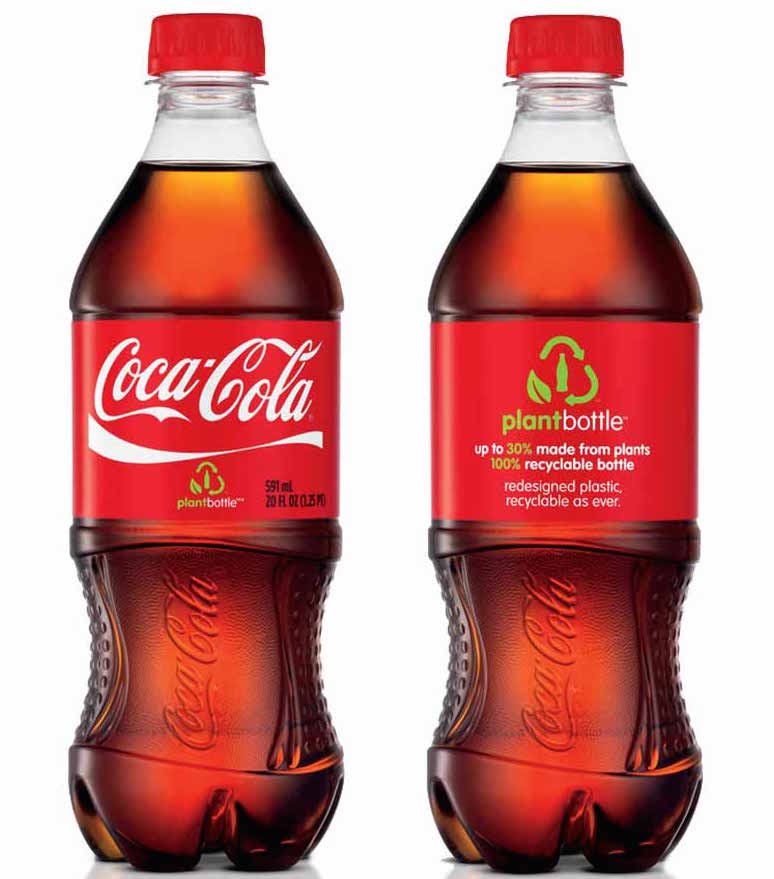
The year after, Coca-Cola introduces its “plant bottle” to the world. The bottle is 100 percent recyclable, and the material itself is composed of up to 30 percent of renewable, plant-based materials.
2015
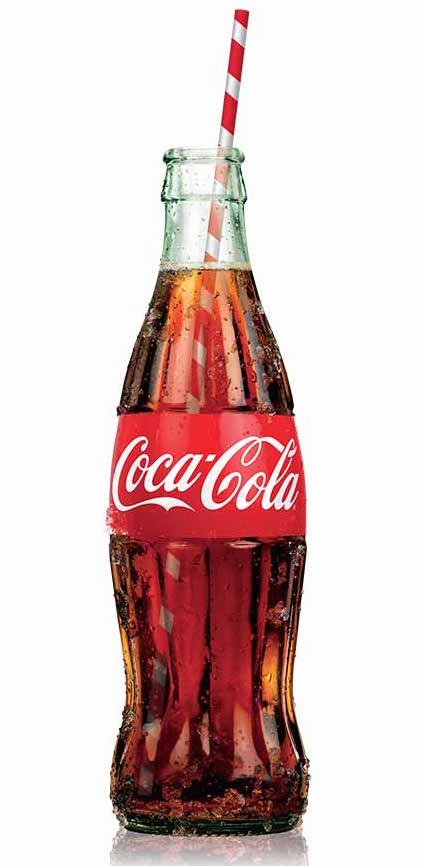
This year, the Coca-Cola bottle turned 100 years old. To celebrate, the company’s creative director, commercial and fine art photographer David LaChappelle, created a wonderful series of images that paid homage to the iconic contour bottle, titled “Together.” The series captured and weaved together the company’s core values throughout the years: optimism, togetherness, and diversity.
Please SHARE if you thought this evolution was incredible!




